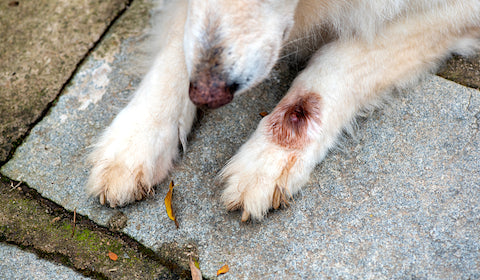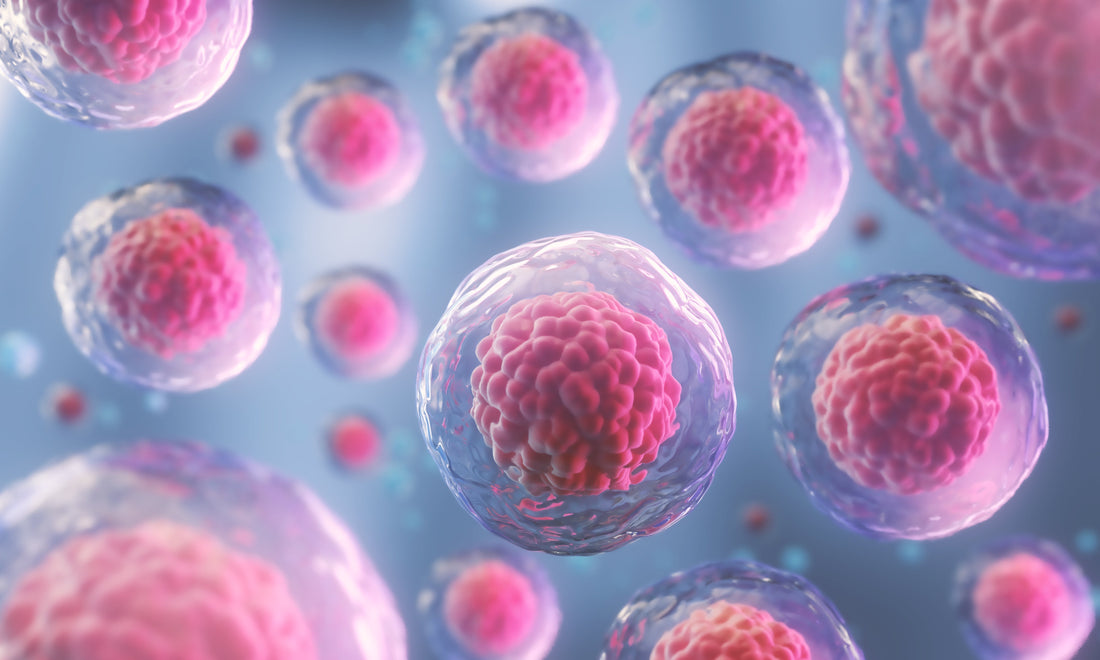What Are Hot Spots in Dogs? Causes, Symptoms, Prevention & Treatment

Hot spots, also known as acute moist dermatitis or pyotraumatic dermatitis, are a common skin condition in dogs that can quickly become painful, infected, and frustrating to treat. These red, inflamed patches often appear suddenly and can worsen fast if not addressed promptly. Hot spots are not only uncomfortable and stressful for the dog but can also be a frustrating and emotionally taxing condition for pet owners trying to manage them.
Let’s break down what causes hot spots, how to recognize them, and what you can do to treat and prevent them.
What Are Hot Spots?
Hot spots are localized areas of skin inflammation and bacterial infection. These spots often become moist, red, irritated, and can ooze pus or fluid. You’ll often find them on a dog’s head, hips, legs, or tail, though they can occur anywhere on the body.
Because of the intense itch or pain, dogs will often lick, chew, or scratch the affected area, which only makes the situation worse by introducing more bacteria.

What Causes Hot Spots?
Hot spots are often triggered by moisture trapped in the coat—especially in warm, humid weather or after swimming. Other causes include allergies (environmental, food-related, and/or caused by parasites), poor grooming, anal gland disease, and underlying infections. Dogs in pain may also lick sore areas excessively, which can lead to hot spot formation. Breeds with thick coats, like Golden Retrievers, are more at risk. Even boredom or anxiety can drive a dog to lick or chew, increasing the chances of a hot spot developing.
Symptoms of Hot Spots in Dogs
Hot spots often appear as raised, red, inflamed sores on the skin. The area usually loses fur, may leak fluid or pus, and can have a strong, unpleasant odor. The sores are typically very itchy, and a dog will frequently lick, chew, or scratch the area, which only worsens the condition. You may also notice your dog flinching when you touch the sore, indicating it’s painful. The key is to act quickly—hot spots can grow and spread rapidly if left untreated.
How to Prevent Hot Spots
Prevention starts with good overall care. You can help prevent hot spots by managing allergies, grooming regularly, and keeping your dog dry—especially after baths or swimming. Mental stimulation through toys or social interaction can also reduce stress-related licking.
How to Treat Hot Spots
Treating hot spots begins with a visit to your veterinarian. The vet will examine the sore, likely test for parasites and/or infections, then shave the fur around the wound for better access to cleaning and stay dry. The area is usually cleaned with an antiseptic like chlorhexidine to promote healing. Depending on the severity, treatment may include antibiotics, steroids, or allergy medication. An Elizabethan collar (E-collar) may be needed to prevent licking. At home, keep the area clean and follow your vet’s instructions closely for a smooth recovery.

Final Thoughts
Hot spots may seem like a minor irritation at first, but they can quickly spiral into a serious issue if ignored. By recognizing the signs early and taking preventive measures, you can keep your dog comfortable, happy, and free from these painful skin flare-ups.
References & Resources
- American Kennel Club (AKC): Hot Spots on Dogs – What They Are and How to Treat Them
- VCA Animal Hospitals: Acute Moist Dermatitis in Dogs
- ASPCA Pet Health Insurance: Hot Spots in Dogs







